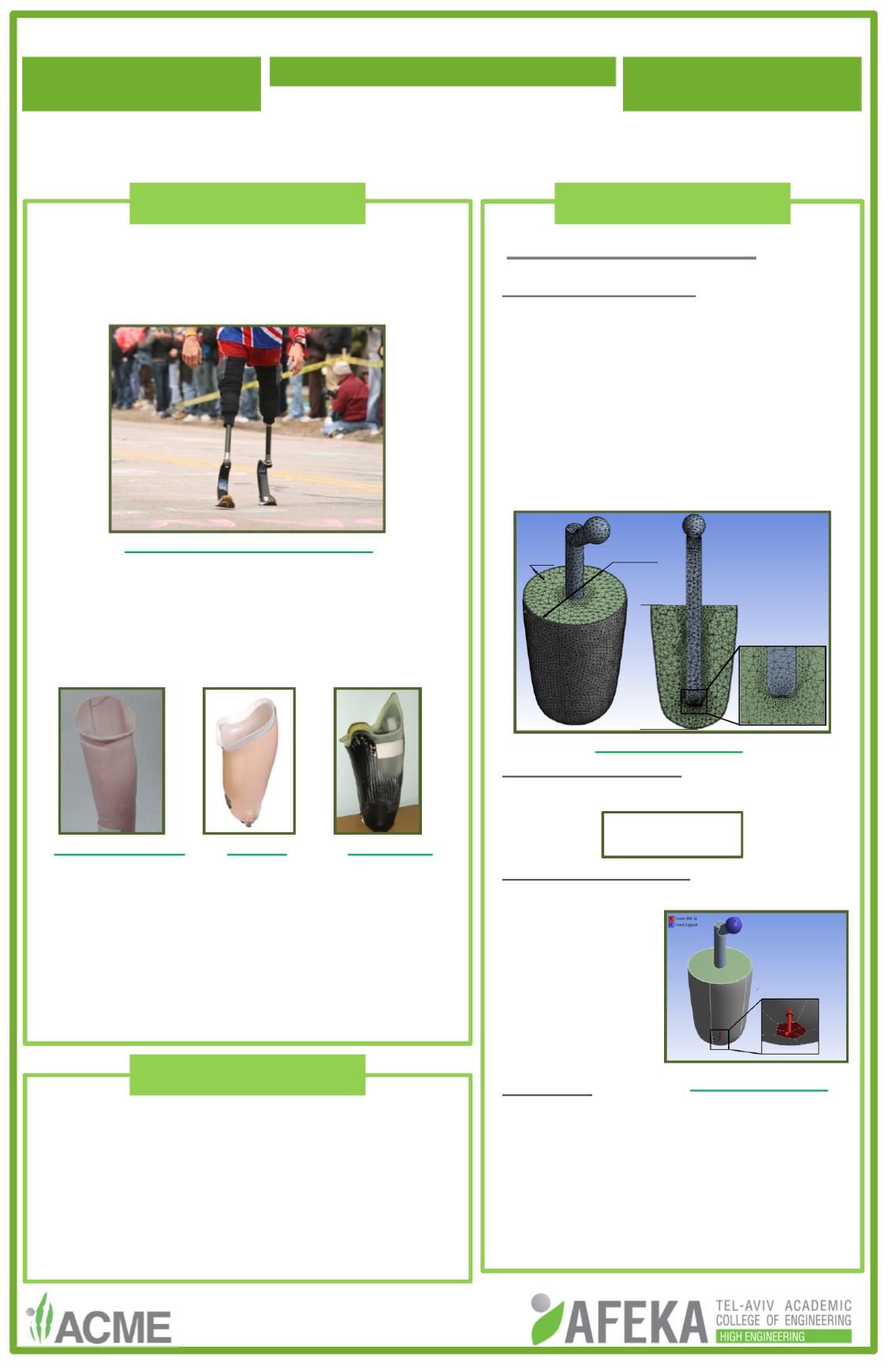
Student name:
Dennis Dashevsky
Department:Medical Engineering
Advisor name:
Dr. SaraNaftali
Strainsand stresses inprostheticsocket
2014
---
1
•
Prosthesis is anessential element in
amputee’s rehabilitation. A fitted prosthesis
socket element, can improve amputee’s life
quality.
•
There are threemain types of trans-femoral
socket interface designs, divided according to
weight bearing characteristics:
quadrilateral socket, ischial containment (IC)
socket andMarlo anatomical socket (M.A.S).
•
Themajor disadvantages of prosthetic sockets
are critical mechanical loads in the residual
limb that cause heavy tissue injuries.
•
Mechanical function comparisonbetween the
three trans-femoral prosthetic socketsmain
types has not beenperformedyet.
1
.
Background
To examine the developed strains and
stresses in 3D stumpmodelswith different
pathologies within basic socket designs,
using numerical method
To comparebetween themechanical function
of the threemain types of the trans-femoral
prosthetic sockets in a stumpmodel
3.1. Numerical Model
Numerical Technique:
•
Geometrical model assembly:
SolidWorks3DCAD
•
Simulation package:ANSYS 14.5
•
Numerical simulation method: Finite
elements
•
Meshing method: Lagrangian, with
150000-270000 linear tetrahedral
elements 4nodes type.
Governing Equation
The static dynamic equation at steady-
state:
Boundary Conditions
•
The surface of the femur head is fixed.
Geometry
•
Variety of 3D stumpmodelswith
different pathologies (tightness, scar,
bone length and asymmetric location)
inBasic socket (BS)
•
Three types of trans-femoral socket
interface designs
Amanwith two lower limbprosthetics
M.A.Ssocket
ICsocket
Quadrilateral socket
Boundaryconditions
3
.
Methods
2
.
Objectives
Ku=F
Meshof aBasicmodel
•
The stump is put
under apre-load.
•
The load of 400N
is applied to the
bottom of the
socket.
20cm
Ø 13.6cm
0.5cm


